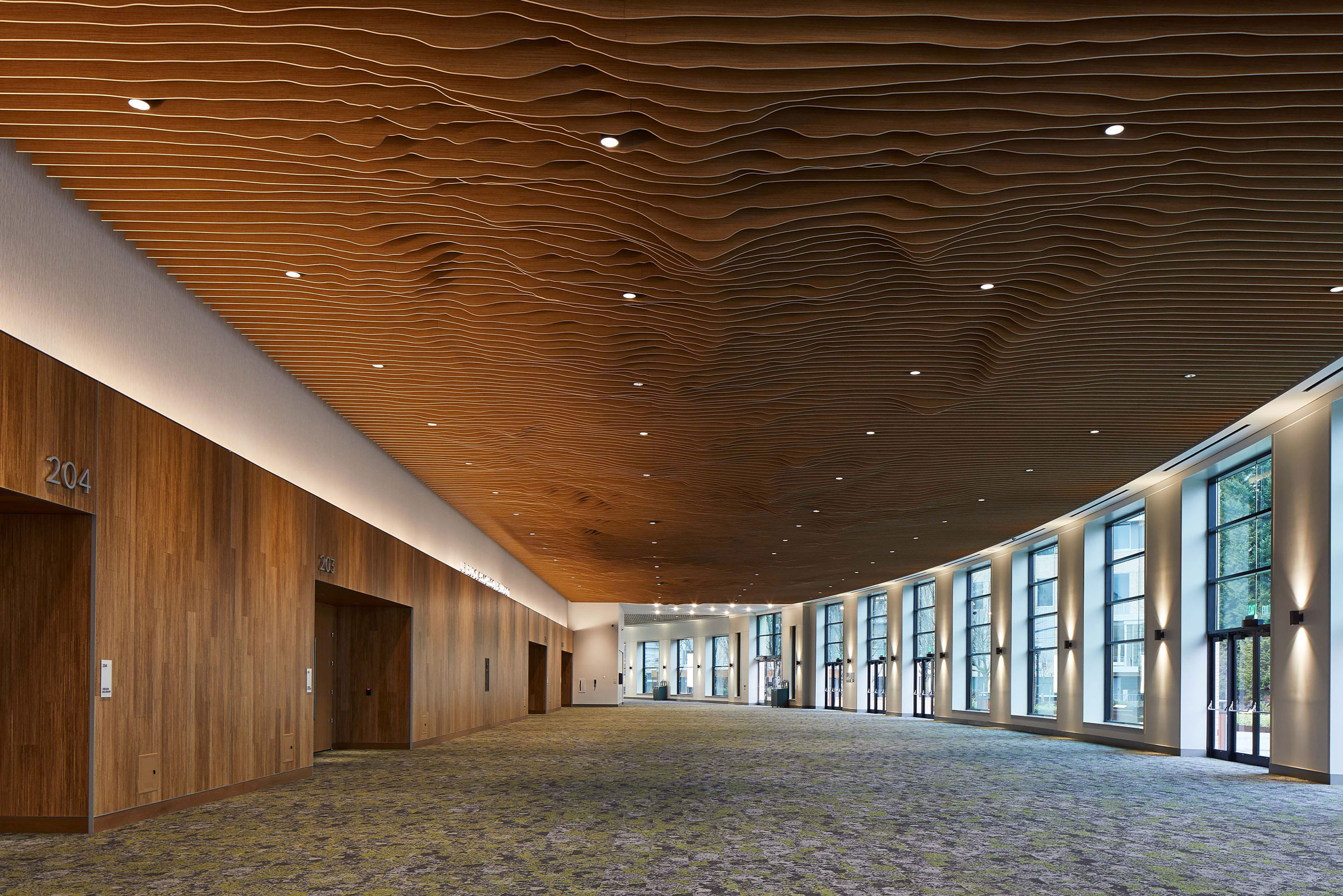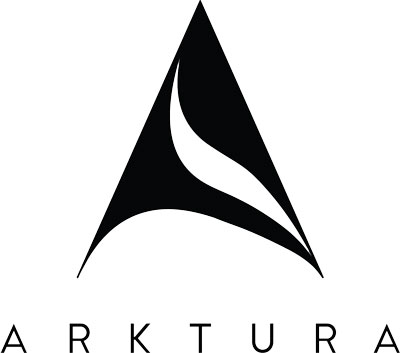Story at a glance:
- Arktura leverages parametric design strategies to increase their architectural systems’ adaptability and customization while extending their design reach into previously inaccessible areas.
- Parametric is a term used to describe an object as a function of one or more independent variables.
Parametric design has revolutionized the way architects and engineers approach the design process, offering unparalleled precision and efficiency. As an approach to architecture, parametricism has yielded enormous design, structure, and automation efficiencies. These efficiencies have opened a broad range of complex and continuous forms previously considered unattainable.
Over the last 20 years “parametric” has slowly become a buzzword in the field, inviting both derision and praise from professionals to students of architecture alike. Parametric design has quietly revolutionized architecture within a generation; however, its roots and principles stretch deep into the previous century and across artistic disciplines.
Parametricism as More than a Tool
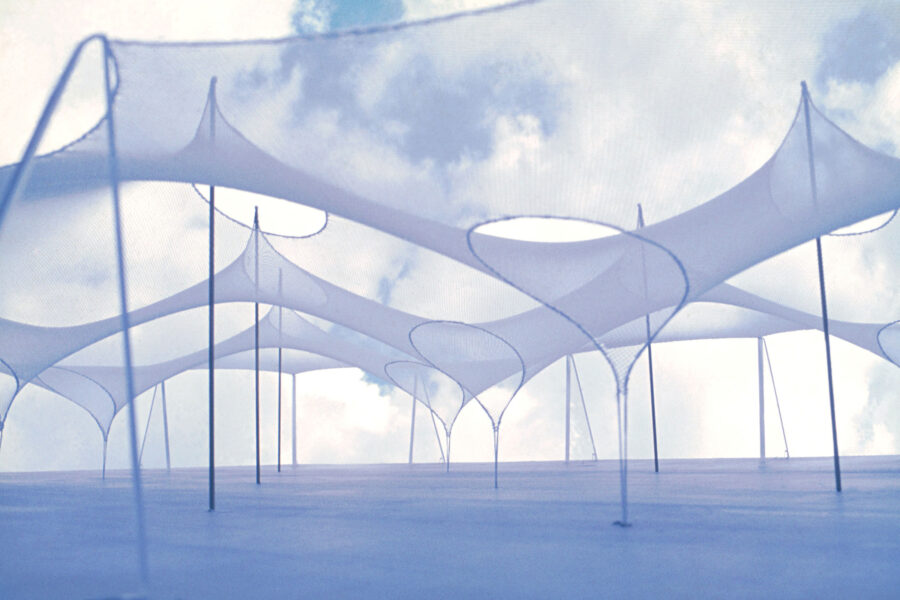
German architect Frei Otto explored new tensile structures in small scale studies like this, in a method he called “form finding.” Designing structures by manipulating constraints and material properties is a key strategy in parametric design. Image by 準建築人手札網站 Forgemind ArchiMedia
At Arktura we have leveraged parametric design strategies to increase our architectural systems’ adaptability and customization while extending our design reach into previously inaccessible areas.
Parametricism is not simply a set of popular new design tools or techniques common to current CAD modeling software. Applied instead as a philosophy, parametricism represents a paradigm shift in the design practice, reflecting analogous changes in a contemporary society driven by process, algorithm, and data.
What is Parametric Design?
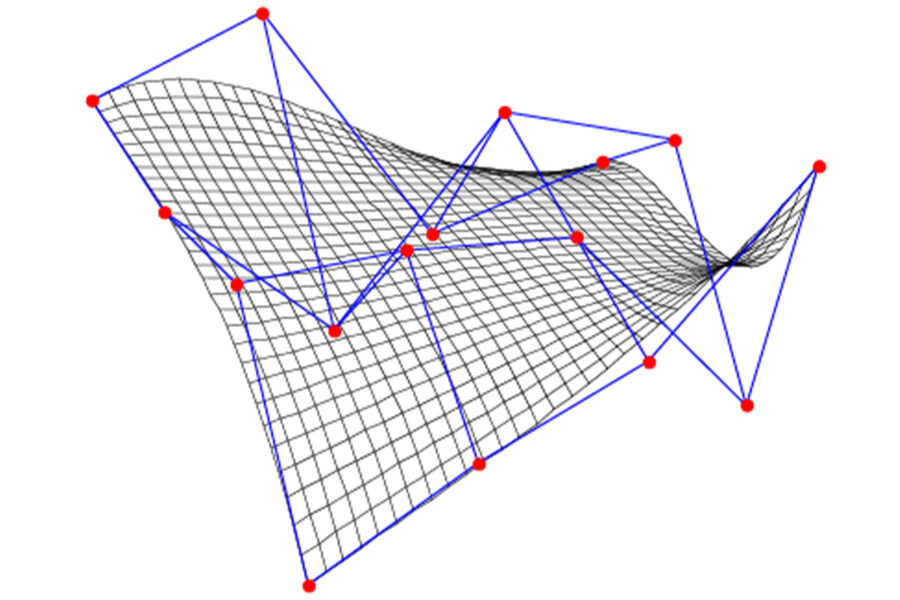
A Bezier surface like this is a common graphical model used throughout the design process. Its structure is defined by a set of control points. Photo by Wyojciech mula, courtesy of Wikimedia Commons
Originating in mathematics, parametric is a term used to describe an object as a function of one or more independent variables.
For example, a Bezier curve is a commonly used parametric curve type, defined as a continuous interpolation between multiple control points. This curve would be familiar to anyone who has used commonly used vector graphic editing software like Adobe Photoshop or Illustrator.
This concept of controlled geometry can be extrapolated into a 3rd dimension. An example is a NURBS surface, which is a common type of parametric geometry found in popular CAD modeling software like Rhino3D. Rather than directly drawing these shapes, both Bezier curves and NURBS surfaces are edited via adjustable control points. Click and drag any control point, and the resulting form changes as well.
Direct vs. Indirect Modeling

The (almost) finished Sagrada Familia by Gaudi showcases a real word example of the funicular structure. Photo courtesy of Arktura
While this is a fundamental example, the consequences of this type of parametric thinking are enormous when applied fully to design practices. Adapted to architecture, the term refers more broadly to a modeling paradigm that favors process over form. Rather than directly drawing or modeling the building, the designer specifies inputs, a set of rules for modifying and transforming geometry, and creates an algorithm to generate many practical solutions for the installation.
Alternatively referred to as parametric, generative, and algorithmic design, these terms all generally signify the same thing. The unifying tenet is that the designer works at a level of abstraction above the model. A designer shapes the processes that create the resulting form rather than the form itself. Much like a liquid will expand to fill the shape of its container unless obstacles or parameters are put in place to direct the flow of water. One helpful way to think of it is indirect vs. direct modeling.
Historical Examples
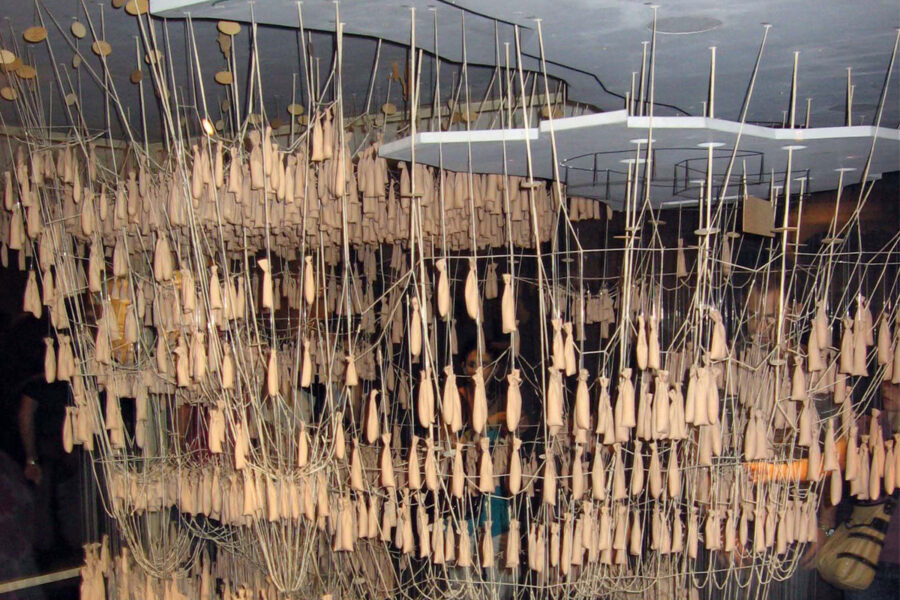
A funicular model of the church of the Güell colony used by Antoni Gaudí is made of a series of ropes and weights inverted to display what the structure will look like. Photo by Canaan, courtesy of Wikimedia Commons
Parametricism has a long history in architecture as a method of designing. Long before the mathematical or computational tools were available or in wide use visionary designers were applying the logic of changing parameters to affect the resulting form in model-building.
A predecessor to parametricism is Antonio Gaudi’s model for the Sagrada Familia. In his studies for the Sagrada Familia, Gaudi modeled the catenary arches of the cathedral as a network of ropes suspended from the ceiling of his studio. He modified the vaulted forms by adding and removing weights in various locations, like an analog version of the control points we use in software today.
Frei Otto coined the term “form-finding” to describe his experiments in modeling surfaces derived from tensile and soap films, draping, and relaxing between wires and anchor points of his choosing. Form finding and physical simulation remain a crucial strategy in parametric modeling.
Bridging Historical to Contemporary
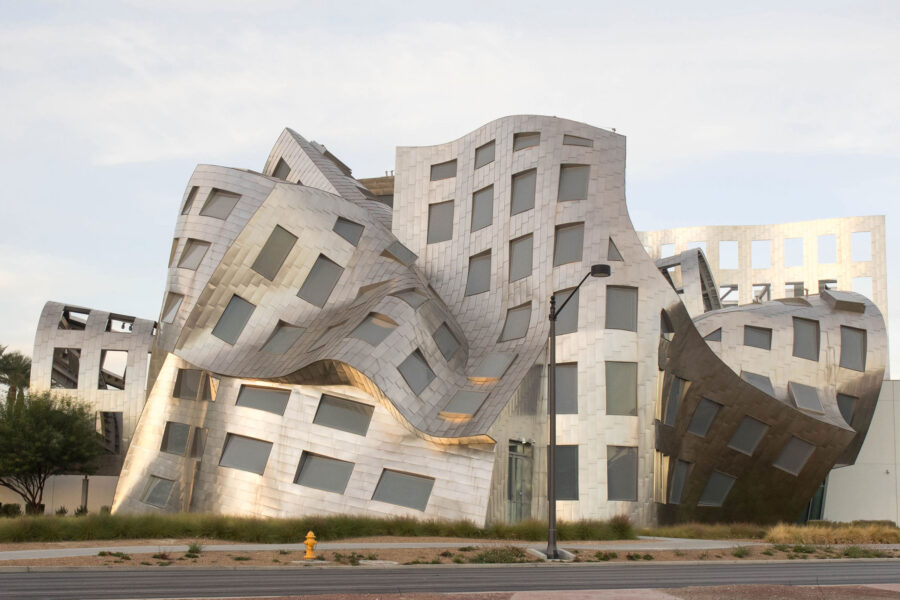
Frank Gehry was the first major architect to bring parametric modeling software from the aerospace industry into architectural design. The Cleveland Clinic Lou Ruvo Center for Brain Health in Las Vegas demonstrates freeform surfaces that were not previously achievable without these tools. Photo by Monster4711, courtesy of Wikimedia Commons
Frank Gehry was the first major architect to introduce modern software tools into parametric architecture. Inspired by a lifelong fascination with curved and flexible bodies of fish, Gehry worked with engineers from NASA/JPL to apply then cutting-edge software from the aerospace industry to fabricate new curved, freeform architectural structures that were previously impossible to achieve.
Luigi Moretti coined the term “parametric architecture,” describing it as “defining the relationships between the dimensions dependent upon the various parameters.” As proof of his concept he designed and presented a model stadium derived from 19 different parameters, mathematically optimizing for things like viewing angles and material cost, at the 1960 Milan Triennale.
Why Is It Important?
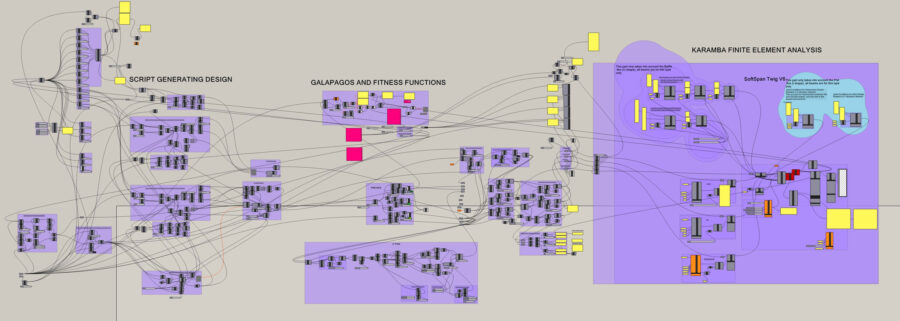
Arktura’s Arborisa collection was designed using parametric scripting tools that simulate the evolutionary process to optimize structure and manufacturability while maintaining an organic design language. Image courtesy of Arktura
It’s easy to get distracted by industry buzzwords, however, parametricism is not just an aesthetic fad enabled by new software and fabrication techniques, but an expression of what Patrick Schumacher calls “increasingly complex social processes and institutions.”
The principles of modernism, including hierarchy, distinct spaces, and specialized functions, are being replaced by a new way of thinking that emphasizes decentralization, networked topologies, and interdependent systems. This shift results from transitioning from an industrial economy to a digital and information-based one in the 21st century.
The Bigger Picture
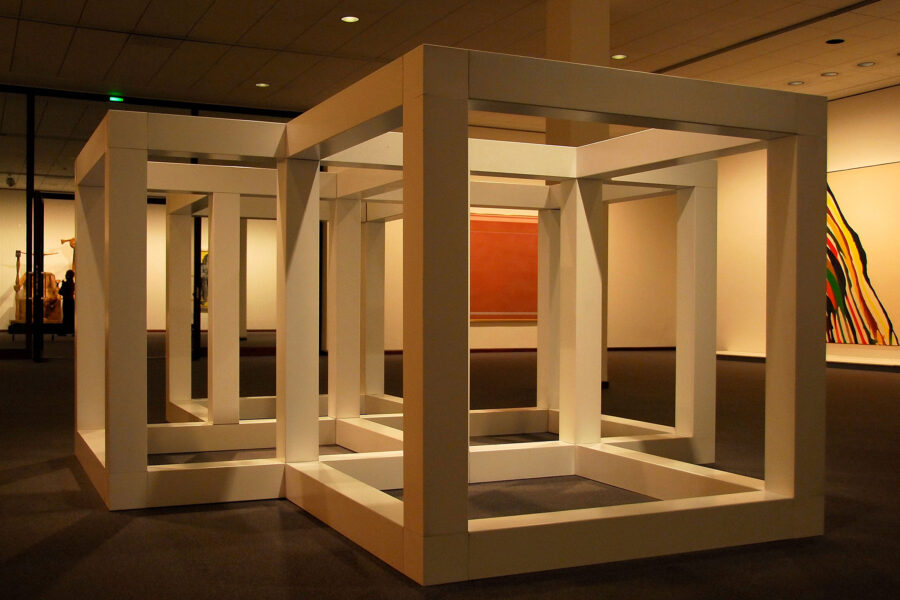
Artist Sol LeWitt’s series on geometric cubes was created as a set of permutations of edges of a cube. Similar to Parametricism, conceptual art concerns itself with process and method as much as the final object. Photo by Rino Porrovecchio, courtesy of Wikimedia Commons
In light of the growing complexities and demands of the modern economy, it is necessary for designers to adopt not just a fresh style but a new mode of production. With so much cultural and physical production and information overload, we must recognize objects as an integral to the system that created them.
One must investigate the context and casual relationships surrounding the object to parse signals from noise. Parallel to the early development of parametric architecture, Conceptualism was playing with the same ideas in the art world. In his manifesto Sentences on Conceptual Art, Sol LeWitt said, “The artist’s will is secondary to the process he initiates from idea to completion. His willfulness may only be ego.” The conceptual artist is not the author of the artwork itself but of the procedure they follow, of which the artwork is an expression.
Parametricism is to architecture what conceptualism is to art. Not simply a new school or technique; it represents a shift to an entirely original approach to form. That is why both are difficult to categorize as a style or set of discrete aesthetic signifiers because they are processes operating at a level above form.
Parametric Design at Arktura
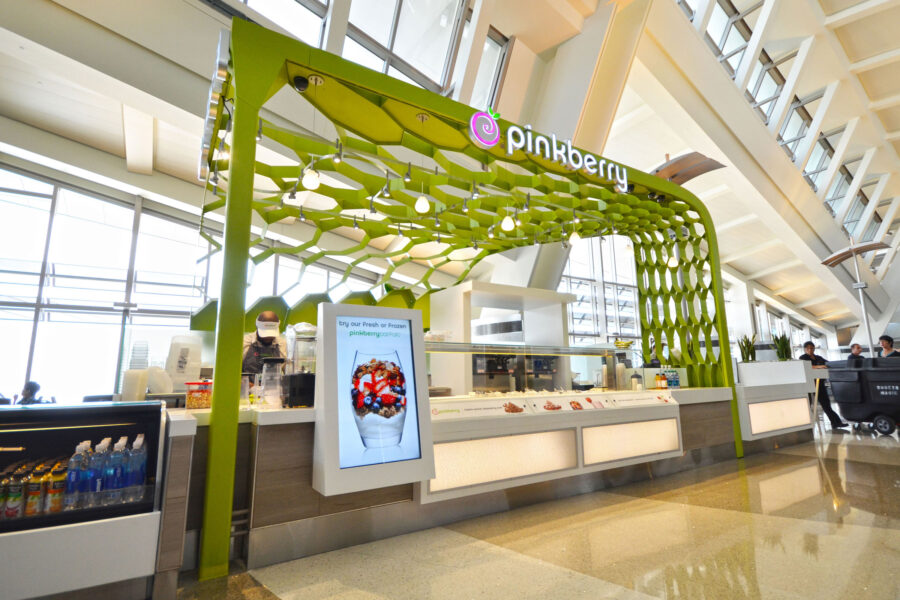
The structure of this custom designed Pinkberry canopy at LAX follows the principles of early parametric design in a modern application. Designed by Rittiluechai Architecture PC. Photo courtesy of Arktura
At Arktura we incorporate parametric principles as a core tenant of our design and manufacturing processes. We focus on the relationship between form and space, concentrating on the near-infinite design possibilities this leads to. This view leads us to develop large-scale architectural systems rather than discrete, individual products.
In combination with computationally controlled manufacturing processes, Arktura has adapted principles of mass customization and flexible adaptability while maintaining rigid tolerances and repeatable quality standards.
Our offerings include a growing line of acoustic baffles, acoustic cloud systems, interior/exterior panel systems, design-forward facades, and custom projects like the canopy above. We refer to each of these product systems as a highly flexible toolset, infinitely configurable to the specific context of the job site and its intended use. Parametricism has also been advantageous for us during the design phase.
Arktura Product Spotlight: Arborisa

An early render of one of Arktura’s latest systems, Arborisa, showcases the complex structure of these interconnected acoustic baffles. Rendering courtesy of Arktura
Examples of applied parametric design are present in our acoustic ceiling systems. Our most recently launched system, Arborisa, presented the challenge of reproducing the organic complexity of branching tree canopies while maintaining the structural tolerances of rectilinear, gridded baffles and our signature modular connectivity.
To solve these challenges we turned to Galapagos—an evolutionary algorithm that runs inside the Grasshopper scripting environment for Rhino3D. Galapagos takes a script that generates thousands of possible designs from input parameters or “genes” and tests them against their structural performance. Then, Galapagos keeps the top performing “genotypes” and blends their values to create a new generation, simulating natural selection and reproduction. Like in the natural world, the gene pool converges over time on solutions that minimize deflection.
The daunting task of manually scouring the limitless number of possible layouts of beams was reduced to a handful of potential designs to select for refinement. In true parametric fashion, we produced an algorithmic system that can generate forms best suited to our needs and can be retooled to other specifications.
Parametric Design in the 21st Century and Beyond

This Bora Architects-designed entry portal at Microsoft’s Redmond, Washington workspace welcomes employees and visitors and sets the tone for the rest of the space. Photo courtesy of Arktura
As a set of principles parametricism is best suited to address the concerns of architecture in the 21st century, which demands adaptable projects in use/context, accountability to various stakeholders, sustainability targets, and continuing to produce breakthroughs in style and form. It is also likely the framework best suited for incorporating new software and manufacturing technologies, including generative AI.
We at Arktura believe establishing parametric processes as a design philosophy as well as a set of tools and talents will set us up for long-term success in the industry. As Patrick Schumacher writes in his essay Parametricism as Style: “Today it is impossible to compete within the contemporary avant-garde scene without mastering these techniques.”

